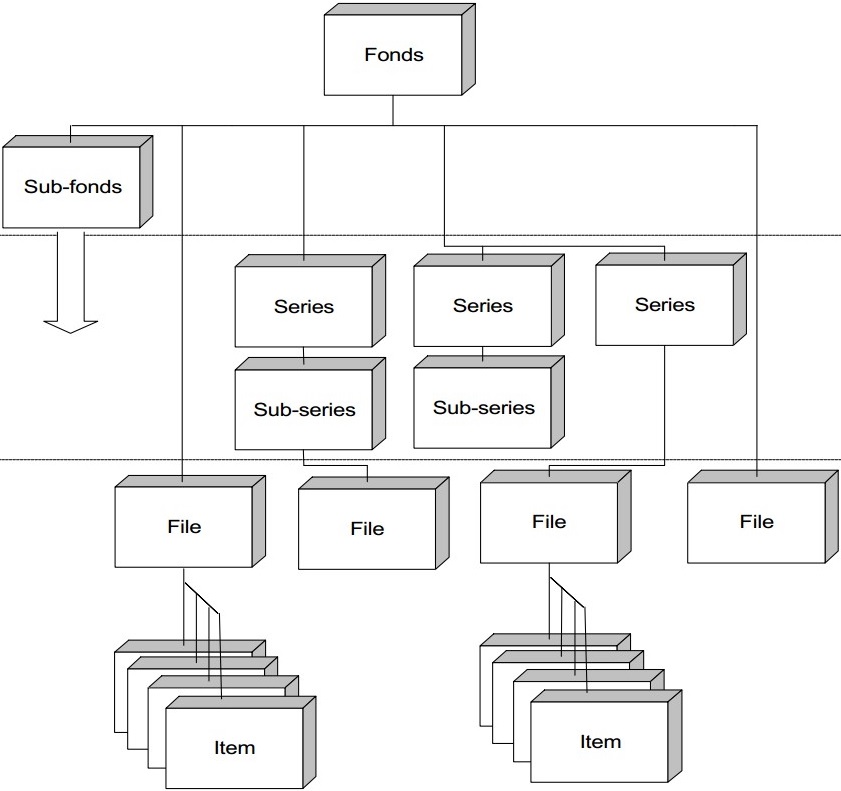To assist organisations to manage their archival materials effectively, Archives is based on two internationally accepted standards for archival description which were developed and published by the International Council on Archives (ICA).
- ISAD(G) - General International Standard Archival Description (second edition, published in 2000).
- ISAAR(CPF) - International Standards: International Standard Archives Authority Record for Corporate Bodies, Persons and Families (second edition, published in 2004).
While ISAD(G) is a set of general rules for the description of archival resources, ISAAR(CPF) governs the descriptions of resource creators.
The ICA standards are designed as guidelines. They define terminology and identify common rules, illuminate their meaning, and provide examples of how the rules can be applied.
The reason why Spydus Archives incorporates the ICA standards is so that it supports local and international consistency in the creation of archival descriptions and resource creator records. In turn, this facilitates the retrieval and exchange of information about archival material.
As Spydus Archives uses the ICA rules and terminology, it is expected that each organisation managing an archive collection will interpret and apply the standards within their own policy and procedure documents.
ISAD(G)
There are two parts to ISAD(G) which you’ll need to be aware of when using the Spydus Archives module.
- Archival description elements.
- Levels of arrangement.
Archival description elements
ISAD(G) is a set of general rules for archival description. The rules are intended to be broadly applicable to describing all types of archival resources, regardless of type or size.
The rules provide guidance in formulating information for each of the 26 elements which together make up the description of an archival entity (e.g. fonds, series, file, item).
ISAD(G) is very flexible, and only a subset of the 26 elements need be used in a given archival description. However, there are some elements which are considered essential. These are: reference code, title, creator, date(s), extent of the unit of description, and level of description. The Archives module provides you with appropriate fields to enter each of these elements, or your chosen subset.
If your archive uses different terminology to ISAD(G) for each element, it is recommended that you use your library policy and procedure documents to clarify and map between your local terminology and the ICA international standard so that you can use the Archives module effectively.
Levels of arrangement
In addition to outlining the 26 elements of archival description, a key component of ISAD(G) is its incorporation of the hierarchical model. This hierarchy represents the internal structure of an archival collection or fonds.
A Fonds is the “entire body of records of an organisation, family, or individual that have been created and accumulated as the result of an organic process reflecting the functions of the creator.”
A Collection is either “a group of materials with some unifying characteristic” or “materials assembled by a person, organisation, or repository from a variety of sources; an artificial collection.”
Source: A Glossary of Archival and Records Terminology, Society of American Archivists, 2005. (Available at: http://www2.archivists.org/glossary).
Collections or fonds are at the top level of the hierarchy, and are then divided into subordinate parts. In turn, these subordinate parts may be further broken down into subordinate parts, and so on. Therefore, the top level of the hierarchy is the collection or fonds as a whole. As you go down the hierarchy, you arrive at individual documents (or items) at the bottom level. An item cannot be further divided and is complete in itself.
The simplest archive would consist of a hierarchy of a Fonds or Collection at the highest level, and its Items as the only level below. The Spydus Archives module will support a simple archival description hierarchy or a very complex one with multiple levels and sub-levels.
This hierarchical model is shown below.
In the image below, Fonds can be substituted with Collection, and Sub-fonds can be substituted with Sub-collection.

ISAAR(CPF)
The ISAAR(CPF) standard “provides guidance for preparing archival authority records which provide descriptions of entities (corporate bodies, persons and families) associated with the creation and maintenance of archives.”
“Archival authority records may be used: a. to describe a corporate body, person, or family as units within an archival descriptive system; and/or b. to control the creation and use of access points in archival descriptions; c. to document relationships between different records creators and between those entities and the records created by them and/or other resources about or by them.”
“Archival authority records are similar to library authority records in as much as both forms of authority record need to support the creation of standardised access points in descriptions. The name of the creator of the unit of description is one of the most important of such access points “
“Archival authority records, however, need to support a much wider set of requirements than is the case with library authority records. These additional requirements are associated with the importance of documenting information about records creators and the context of records creation in archival description systems. As such, archival authority records go much further and usually will contain much more information than library authority records.”
Source: ISAAR (CPF): International Standard Archival Authority Record for Corporate Bodies, Persons and Families, 2nd Edition, 2004.